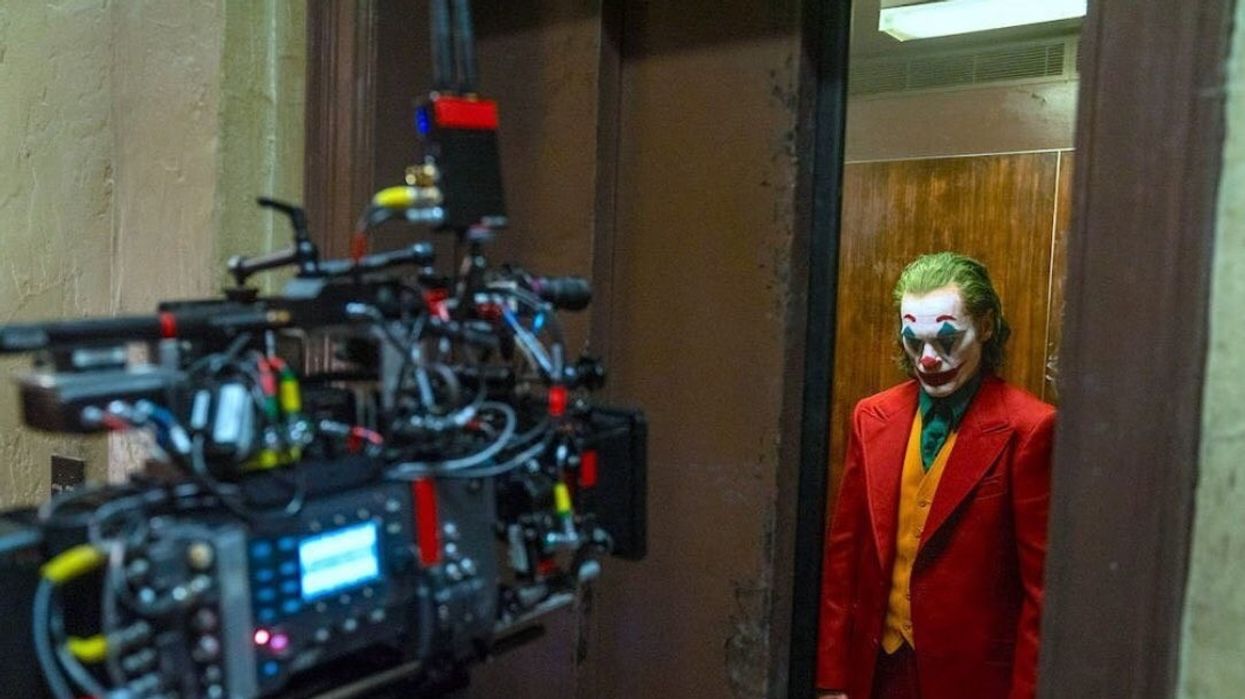How to Recreate the Look of 'Joker' on a Small Budget
Want to emulate the lighting techniques from the Joker movie? Here's how.

Todd Phillips' Joker was a massive box office and critical success. Part of the reason it was such a hit was that it really focused on the reality of the world. Subtle colors were used to accentuate mood and tone, and the end result feels like a dystopian Gotham City ruled by chaos and crime.
The movie's budget was close to $100 million.
Considering we all don't have that kind of cash to burn, is there a way to achieve the look of Joker on an indie budget?
The short answer is "yes."
We will go into the detailed answer in a bit.
First, check out this video from Aputure and let's talk after the jump...
How to Light Scenes like Joker
Right off the bat, we have to talk about how the colors in Joker set the mood for the camerawork. The blues and oranges were created with gels, so if you're trying to recreate scenes from the movie or just imitate them, make sure you have some gels on hand.
Make sure, though, that you understand how color is used in filmmaking. It's not enough to throw blue and orange gels on your lights for your shot to be "cinematic"—there's more to it than that. Colors help tell your story by setting the mood, communicating the emotional energy of the moment, and adding depth and dimension to the space.
In fact, if you really want to dig into how color is used in film, the DP who worked on Joker, Lawrence Sher, breaks it down in this Vanity Fair video.
So let's talk about the rest of the video.
I loved how we saw the high and lower budget version of the same setup. Film lights come in different shapes, sizes, and prices, but you can use them to do a lot of the same things. You just need to take into account the color, direction, and motivation of the different lights.
If you're trying to recreate any movie scene, try to identify where lights are coming from in any setup. Are the lights you see hard, soft, direct, diffused?
Look at all the determinations they made in the screengrab below.
What about doing it on a lower budget?
You need to ask the same questions and substitute with less expensive options.
So what did we learn?
The main techniques used in this video are using a spotlight to fake a window light, simulating TV light, and using dimmers on your practicals.
We also learned how cookies (created with cardboard cutouts) help fake window blinds when placed in front of a direct source. You can simulate TV light, complete with the flickering effect, using a film light, in this case, an LED panel.
These choices add contrast and depth to the scene in question.
Put a dimmer on every light possible, so you can more accurately control even the practicals on set. This device will allow you to adjust the amount of power going to the light so you can adjust its brightness.
At the end of the day, it's not about the amount you spend, but the strategy you use to shoot.
What's next? Learn film lighting techniques!
Film lighting techniques make your commercial, movie, or TV show look cinematic. It will help your story pop off the screen. We break down every major technique.
Read to learn more!
Source: Aputure

















